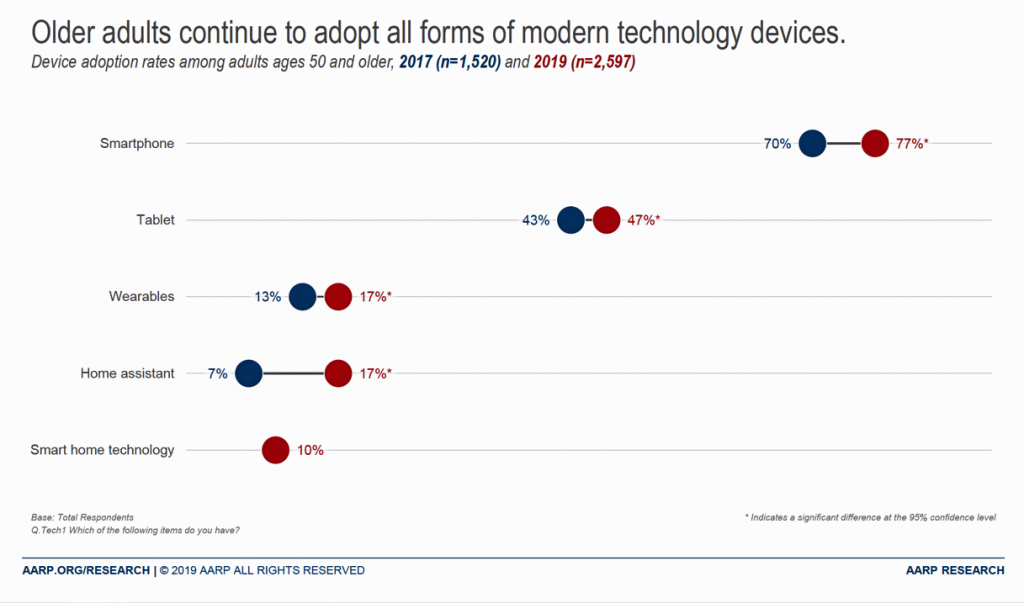
One in two people over 50 bought a piece of digital technology in the past year. Three in four people over fifty in America now have a smartphone. One-half of 50+ Americans use a tablet, and 17% own wearable tech. The same percentage of people over 50 own a voice assistant, a market penetration rate which more than doubled between 2017 and 2019, AARP noted in the 2020 Tech and the 50+ Survey published in December 2019.
For this research, AARP worked with Ipsos to survey (online) 2,607 people ages 50 and over in June and July 2019.
Across all of the tech categories AARP studies, younger-elders between 50 and 59 tend to demonstrate higher levels of device adoption than people 70 and older.
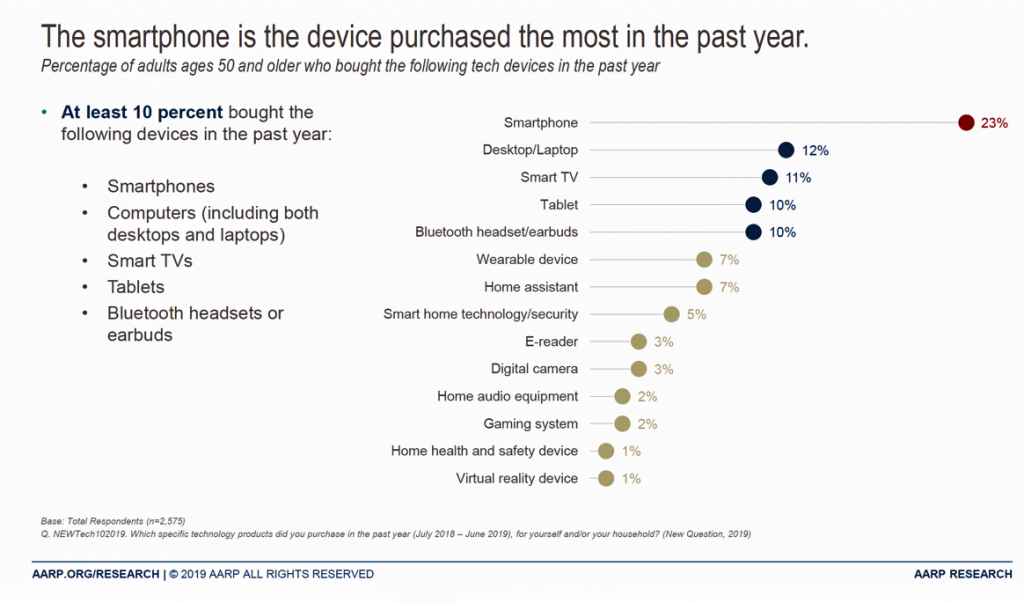 The smartphone ranked as the top-purchased tech item among folks over 50 in the past year, followed by a computer, smart TV, tablet, or Bluetooth headset/earbuds. Smartphone adoption among older people grew by 50% since 2014, rising from 48% adoption among people 50+ to 79%. The vast majority of older people, across the age groups, use their smartphones every day: most commonly, to send or receive emails, to get directions or traffic information, or to surf the web for news, information, or social networking.
The smartphone ranked as the top-purchased tech item among folks over 50 in the past year, followed by a computer, smart TV, tablet, or Bluetooth headset/earbuds. Smartphone adoption among older people grew by 50% since 2014, rising from 48% adoption among people 50+ to 79%. The vast majority of older people, across the age groups, use their smartphones every day: most commonly, to send or receive emails, to get directions or traffic information, or to surf the web for news, information, or social networking.
Tablets are still a go-to mobile platform for older Americans compared with younger people. Now, tablet ownership among the 50+ population at 52% exceeds tablet use for people 18-49 years of age at 49%. Over one-half of older people also use their tablets daily, especially to visit websites or surf the internet, get news, participate in social networks, or play games.
Older Americans find tablets and smartphones alike are useful on-ramps to social networks: 58% of the 50+ folks use social media apps at least weekly, ranging from 65% of people 50-59 to 50% of people age 70 and older. Note that most older adults use tech to stay connected with family and friends, but only 42% use social media daily to do so. Among all social networks used by people 50+, Facebook garners the most engagement at 63% of older adults, followed by YouTube and Instagram.
Wearable tech adoption rates are similar among people over 50 to those under 50, AARP observed, although wearable use is more likely among younger-elders between 50-59 (22%) compared with half-that level, 11% of people 70 and over.
There’s emerging demand for home assistants/smart speakers among older Americans, more than doubling in adoption in two years. 20% of people 50-59 have a home assistant, as do 18% of those 60-69 and 12% of people 70 and over. Half of older people with a home assistant use them every day, across all age groups. One in 4 people 50+ use the device at least several times a day.
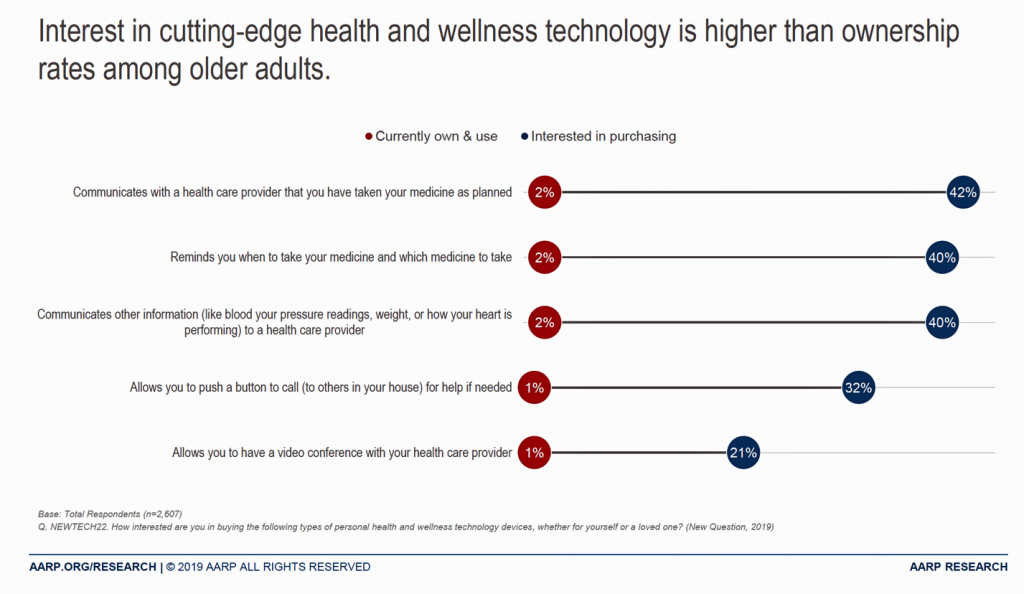 About four in 10 people 50+ are interested in “purchasing” (the word used in the AARP survey) several digital health innovations:
About four in 10 people 50+ are interested in “purchasing” (the word used in the AARP survey) several digital health innovations:
- Communicating with a health care provider that you’ve taken a medication as prescribed
- Reminding you when to take your medicine and which to take, and
- Communicating other information, like blood pressure, weight, or heart health) to a health care provider.
One-third of older people would be interested in “a button to push to call for help” and one in five people would purchase video conferencing capability to speak with a health care provider.
This part of the study found that few older people prefer to substitute their health care management to technology: 45% said they would prefer health care management “only” with medical professionals, and equally 45% of older people said they’d prefer medical management “mostly” with medical professionals.
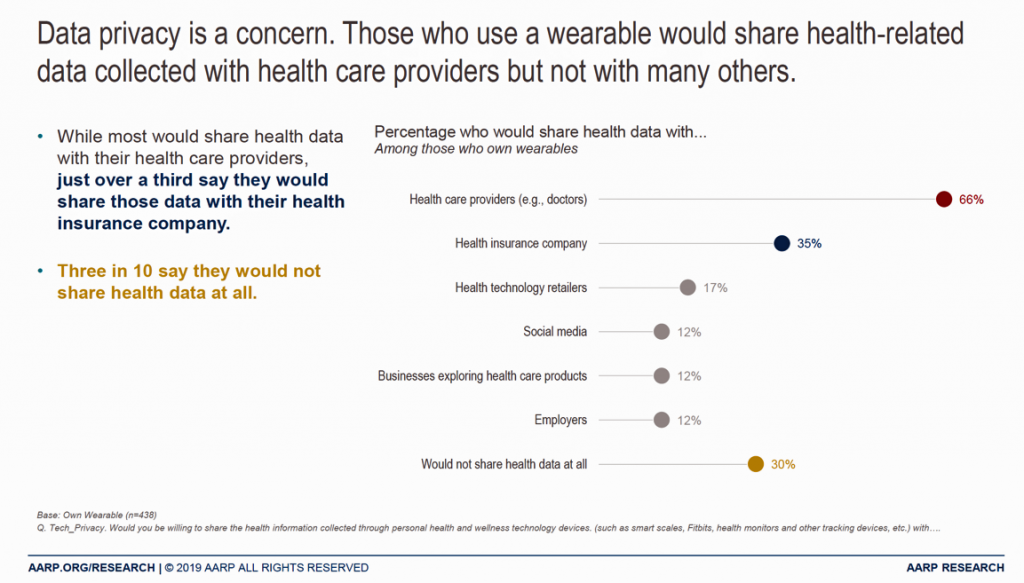
Privacy remains a concern for one-half of people over 50 who are not confident in online privacy assurance when using a wireless device. The proportion of people “very confident” in privacy assurance using wireless tech is quite low, ranging between 12% and 15% among the older age cohorts.
Most older Americans would share data collected through a wearable tech device with their health care provider, but a minority (35%) would share that information with a health insurance company. While older people who own a wearable would be more willing to share their health data on social media, only 12% of them would be likely to do so.
One-third of older people wouldn’t share their health data with any third party at all.
Health Populi’s Hot Points: With voice assistant adoption on fast-rising among people over 50, it’s important to know that older people are also keen on smart home technology – notably, devices that deliver convenience, safety and peace of mind, AARP’s poll called out. Devices addressing these benefits could include door cameras, security-focused sensors that monitor doors and windows, and smart appliances that help streamline life-flows.
But the limiting factor underlying adoption of smart-and-wireless things is privacy and security. Among people who own and use home assistants or smart home technology — that is those older folks already “converted” to the benefits of these devices — fully 50%+ of them are not confident in the privacy of these interactions.
Older peoples’ favorite data stewards for privacy are….their doctors. But are we asking too much of U.S. practicing physicians to carry the health data privacy and security burden?
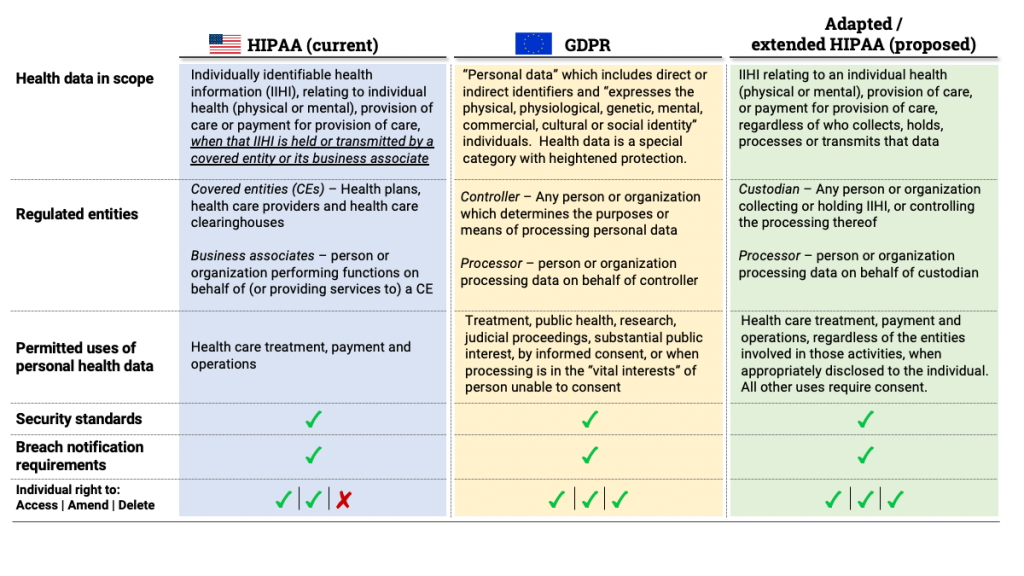 Under the current privacy regime of HIPAA for healthcare, indeed, we are.
Under the current privacy regime of HIPAA for healthcare, indeed, we are.
“HIPAA, as passed in 1996 and amended in 2009 through the Health Information Technology for Economic and Clinical Health (HITECH) Act, defines privacy through a sectoral lens. As in other squares of America’s privacy ‘patchwork,’ HIPAA specifies a group of industry actors (health plans, provider organizations, and clearinghouses), designates them as “covered entities,” and then regulates how these entities and their subcontractors (business associates) use a certain class of information (individually identifiable health information)….The focus on a specific set of entities, however, links privacy protections to a snapshot of the industry at a point in time,” Lisa Bari and Daniel O’Neill assert in “Rethinking Patient Data Privacy in the Era of Digital Health,” published in Health Affairs in December 2019.
The emphasis in bold blue is mine, underpinning the not-so-modest proposal I make in my book, HealthConsuming: From Health Consumer to Health Citizen, granting Americans privacy protections akin to those European health citizens enjoy covered by the comprehensive GDPR, the General Data Protection Regulation that covers all personal data — health/care and beyond. This table comes from Bari and O’Neill’s essay, comparing HIPAA with the GDPR, with a proposal for how to extend HIPAA in the meantime…until U.S. legislators can get on the same privacy page.
There were fascinating and helpful innovations at CES 2020 addressing health, and healthy aging, in Las Vegas unveiled earlier this month. Their promise, in terms of market penetration and use by people who need and want to age well at home, will be limited by consumers’ privacy concerns without our attending to this in real-time, right now.
So says Satya Nadella, CEO of Microsoft, who told the Davos audience at the World Economic Forum this month that data privacy is truly a human right.
Today is Data Privacy Day — who knew?


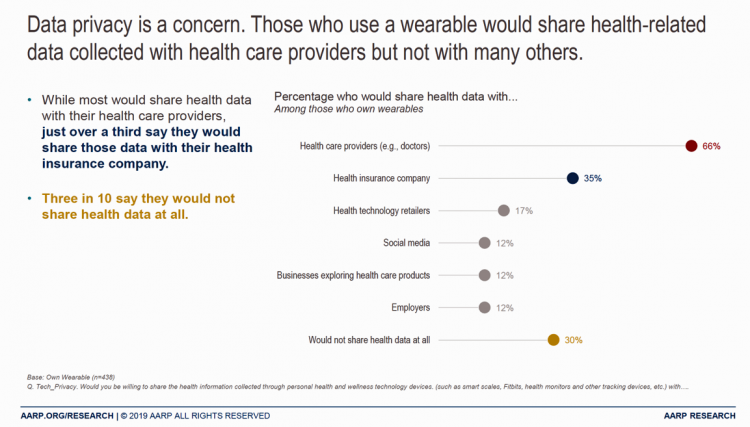


 Thank you, Jared Johnson, for including me on the list of the
Thank you, Jared Johnson, for including me on the list of the  I am so grateful to Tom Lawry for asking me to pen the foreword for his book, Health Care Nation,
I am so grateful to Tom Lawry for asking me to pen the foreword for his book, Health Care Nation,  Thanks to Feedspot for naming this blog, Health Populi, as a
Thanks to Feedspot for naming this blog, Health Populi, as a